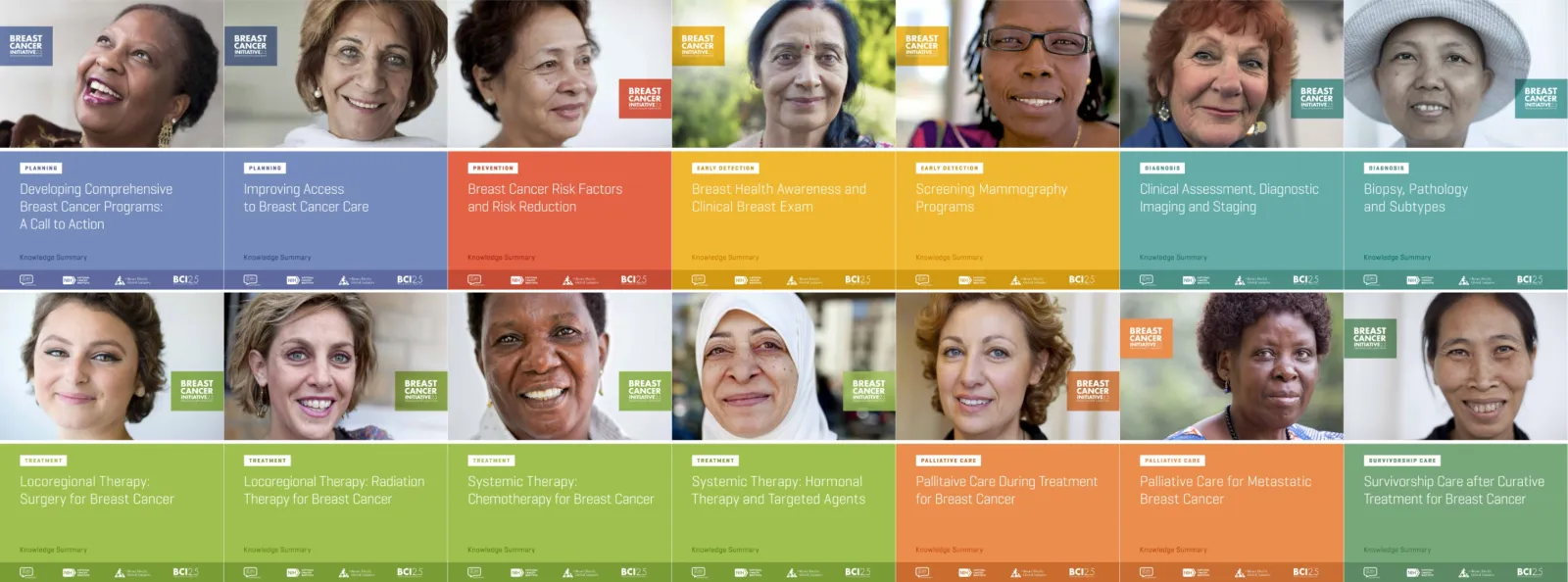Meeting the Challenge
- Program design and improvements should be based on identified needs and barriers, outcome goals and available resources.
- Breast cancer programs should follow a defined resource stratified pathway to ensure coordinated incremental program improvements across the continuum of care.
- Comprehensive breast cancer control planning is a long-term process that requires acknowledgement that changes in population-based outcomes can take years to realize. Pilot projects, research studies and quality assurance programs that use short- and long-term process metrics can help inform future program direction.
Key Tools
The Knowledge Summaries for breast cancer control provide resource-stratified pathways to facilitate decision making by policy makers, healthcare administrators and advocates engaged in implementing breast cancer control programs at various resource levels. The Knowledge Summaries emphasize coordinated, incremental program improvements across the continuum of care to achieve the best possible outcomes at each resource level. The sixteen Knowledge Summaries for breast cancer control address planning, prevention, early detection, diagnosis, treatment, palliative care and policy and advocacy.
Image
